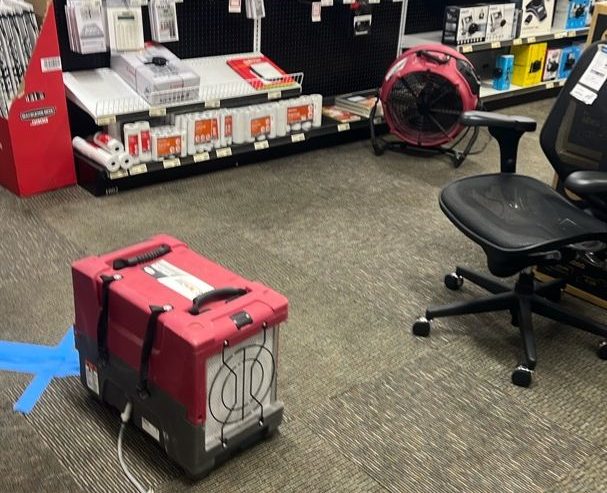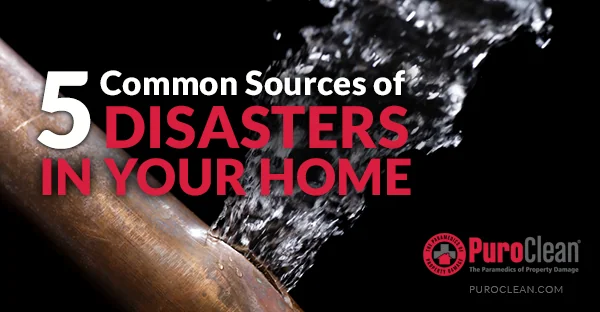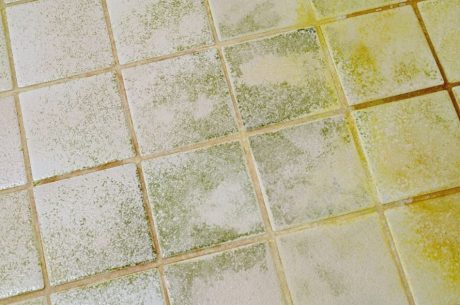Table of Contents
Water damage can strike suddenly and without warning, making it crucial to know the immediate Steps to Take After a Water Damage Emergency to reduce the impact on your property.
Whether you’re dealing with flooding, a burst pipe, a sewage backup, or any other form of water damage, being prepared and acting quickly can make all the difference. Below, we outline essential Steps to Take After a Water Damage Emergency to help you navigate the situation effectively and protect your home or business.
1. Cut Off the Flow of Water
The first and most critical step in addressing water damage is to stop the source of water. Water can cause extensive damage in a short amount of time, so acting quickly is essential. If the water damage is due to a burst pipe, a broken appliance, or a plumbing issue, locate the main water shut-off valve and turn it off immediately.
Every homeowner should know the location of this valve beforehand, as it can save precious time during an emergency. In some cases, you may need to shut off the water supply to a specific area of the house, such as under a sink or behind a toilet, if the damage is localized.
For sewage backups or sanitary system issues, stop using all water-related fixtures, including sinks, toilets, and showers, to prevent additional water from flowing into the blocked area. This will help contain the problem and reduce the risk of further contamination.
If the water damage is caused by external factors, such as heavy rainfall or flooding, you may not be able to stop the water flow entirely. In such cases, focus on protecting your property by moving valuables to higher ground and using sandbags or other barriers to divert water away from your home.
Even small leaks, such as those from a dripping pipe or a minor roof leak, should be treated as emergencies.
Over time, these leaks can lead to mold growth, structural damage, and other costly issues. If you notice signs of water damage, such as water stains, musty odors, or warped walls, take immediate action to identify and address the source of the problem. By stopping the flow of water as quickly as possible, you can minimize the extent of the damage and make the restoration process more manageable.

2. Protect Yourself and Your Family
Safety is the top priority during a water damage emergency. Water can create hazardous conditions, including electrical risks, structural instability, and exposure to contaminants. Before entering a water-damaged area, ensure that the electricity and gas supply are turned off. If the main electrical panel is located in a dry area, use a flashlight to turn off the power.
However, if standing water is present near the panel or if you are unsure about the safety of the area, do not attempt to turn off the electricity yourself. Instead, wait for a professional to assess the situation.
Wear protective gear, such as rubber boots, gloves, and masks, to shield yourself from potential hazards. Contaminated water, such as sewage or floodwater, can contain harmful bacteria, viruses, and chemicals that pose serious health risks.
Avoid direct contact with the water and wash your hands thoroughly after handling any affected items. If the water damage is extensive or involves contaminated water, consider evacuating the premises until professionals can safely address the situation.
Protect your valuables by moving them to a dry area. Lift furniture off wet carpets and place aluminum foil or wooden blocks under the legs to prevent staining. Remove rugs, curtains, and other absorbent materials from the affected area to reduce the risk of mold growth.
If you notice visible mold, avoid disturbing it, as this can release spores into the air and worsen the problem. By taking these precautions, you can ensure the safety of your family and minimize the impact of water damage on your belongings.
3. Call Your Insurance Company
Once the immediate safety concerns are addressed, contact your insurance company to report the water damage. Most homeowner’s insurance policies cover water damage caused by sudden and accidental events, such as burst pipes or appliance malfunctions.
However, damage resulting from neglect or lack of maintenance may not be covered. Review your policy to understand the extent of your coverage and any exclusions that may apply.
When speaking with your insurance provider, provide as much detail as possible about the damage. Take photos and videos of the affected areas to document the extent of the loss.
If you have photos of the area before the damage occurred, include these in your claim to help the adjuster assess the situation. Make a list of damaged items, including their approximate value, to support your claim.
The insurance company will send an adjuster to inspect the damage and determine the amount of compensation you are eligible to receive. Be prepared to answer questions about the cause of the damage, the steps you have taken to mitigate it, and any repairs that have already been completed.
Keep records of all communication with your insurance company, including emails, phone calls, and written correspondence. By filing your claim promptly and providing thorough documentation, you can expedite the process and ensure that you receive the compensation you deserve.

4. Call a Water Damage Restoration Company
Professional water damage restoration services are essential to address the issue effectively and prevent long-term problems.
Water damage can lead to mold growth, structural instability, and other issues if not handled properly. A reputable restoration company will have the expertise, equipment, and resources to extract water, dry the affected areas, and restore your property to its pre-damage condition.
When choosing a restoration company, look for one that offers 24/7 emergency services, as water damage requires immediate attention.
Companies like Power Dry specialize in water removal, sewage cleanup, mold remediation, and structural drying. They use advanced tools, such as industrial-grade dehumidifiers, air movers, and moisture detectors, to ensure that all moisture is removed from your home.
The restoration process typically begins with a thorough inspection to assess the extent of the damage. The technicians will identify the source of the water, classify the type of water damage (clean, gray, or black water), and develop a customized plan to address the issue.
They will then extract standing water, dry the affected areas, and sanitize the space to prevent mold and bacterial growth. By hiring a professional restoration company, you can save time, reduce stress, and ensure that your property is restored safely and efficiently.
5. Clean Up Standing Water
Standing water is one of the most damaging aspects of a water damage emergency. It can seep into floors, walls, and furniture, causing structural damage and promoting mold growth. The longer water sits, the more damage it can cause, so it’s important to remove it as quickly as possible.
For small amounts of water, you may be able to use a wet/dry vacuum or mop to clean it up. However, for larger volumes of water, professional equipment is necessary.
Water damage restoration companies use powerful pumps and extractors to remove standing water efficiently. They also use moisture meters and thermal imaging cameras to detect hidden moisture in walls, ceilings, and floors.
The type of water involved also affects the cleanup process. Clean water (Category 1) from a broken pipe or rainwater is relatively safe to handle, but contaminated water (Category 2 or 3) from sewage backups or flooding requires special precautions.
Contaminated water can contain harmful pathogens, chemicals, and debris that pose serious health risks. In such cases, it’s best to leave the cleanup to professionals who have the necessary training and equipment to handle hazardous materials safely.
After removing the standing water, the affected areas must be thoroughly dried to prevent mold growth. This may involve using dehumidifiers, air movers, and fans to circulate air and remove moisture. By addressing standing water promptly, you can minimize damage and reduce the risk of long-term issues.
6. Start Water Damage Repair Immediately
Once the water has been removed and the area has been dried, the next step is to begin repairs. Water damage can weaken structural materials, such as drywall, insulation, and flooring, so it’s important to address these issues as soon as possible. Delaying repairs can lead to further damage, including mold growth and structural instability.
Start by removing any damaged materials that cannot be salvaged, such as soaked drywall, carpeting, and insulation. These materials can harbor moisture and mold, making it difficult to fully dry the area. Once the damaged materials have been removed, clean and disinfect the area to eliminate any bacteria or mold spores.
If the damage is extensive, you may need to hire a professional contractor to handle the repairs. This may include replacing flooring, repairing walls, and reinstalling insulation. Be sure to document all repairs for insurance purposes, including photos and receipts. By starting the repair process immediately, you can restore your property to its pre-damage condition and prevent further issues.
7. Check for Mold
Mold is a common consequence of water damage and can begin growing within 24-48 hours of exposure to moisture. It thrives in damp, dark environments and can spread quickly if not addressed. Mold not only damages your property but also poses serious health risks, especially for individuals with allergies, asthma, or weakened immune systems.
After a water damage emergency, thoroughly inspect your home for signs of mold. Look for visible growth, musty odors, and discoloration on walls, ceilings, and floors. Pay special attention to hidden areas, such as behind walls, under flooring, and inside cabinets, where mold can grow undetected.
If you suspect mold growth, contact a mold remediation specialist to assess the situation. They will use specialized equipment, such as moisture meters and air quality tests, to detect mold and determine the extent of the problem.
The remediation process typically involves containing the affected area, removing mold-infested materials, and cleaning and disinfecting the space. By addressing mold promptly, you can protect your health and prevent further damage to your property.
8. Decide What Needs to Be Restored
The final step in the water damage restoration process is to determine what needs to be repaired or replaced. This may include structural elements, such as walls, floors, and ceilings, as well as personal belongings, such as furniture, appliances, and electronics.
Work with your insurance company and restoration professionals to assess the damage and develop a plan for restoration. In some cases, items may be salvageable through cleaning and repairs, while others may need to be replaced entirely. Be sure to keep detailed records of all restoration work, including photos, receipts, and invoices, to support your insurance claim.
Restoration can be a time-consuming process, but it’s essential to ensure that your property is safe, functional, and free from mold and other hazards. By working with experienced professionals and following a structured plan, you can restore your home or business to its pre-damage condition and move forward with peace of mind.
9. Repair and Restore Damaged Areas
Once the area is dry and clean, begin repairs to restore your property.
- Replace Damaged Materials: Remove and replace water-damaged drywall, insulation, and flooring.
- Repair Structural Damage: Address any structural issues, such as warped beams or weakened foundations.
- Restore Personal Belongings: Clean and repair furniture, appliances, and other items that were affected by the water.
- Upgrade for Prevention: Use the restoration process as an opportunity to upgrade to water-resistant materials and energy-efficient systems.
10. Take Preventative Measures for the Future
After restoring your property, take steps to prevent future water damage.
- Regular Maintenance: Inspect pipes, roofs, and appliances regularly for signs of wear and tear.
- Install Water Alarms: Use water leak detectors to alert you to potential leaks before they cause significant damage.
- Improve Drainage: Ensure your property has proper drainage to prevent flooding during heavy rain.
- Seal Cracks: Seal cracks in walls, windows, and foundations to prevent water from entering your home.
- Emergency Plan: Create an emergency plan for your family, including evacuation routes and emergency contacts.
Protect Your Investment & Restore Your Peace of Mind
Don’t let water damage and potential mold growth overwhelm you. Contact PuroClean of Lansdale today at (267) 834-5900 for a free consultation. We’ll be there to guide you through the restoration process and ensure your property is restored quickly, safely, and efficiently.



 PuroClean of Lansdale
PuroClean of Lansdale